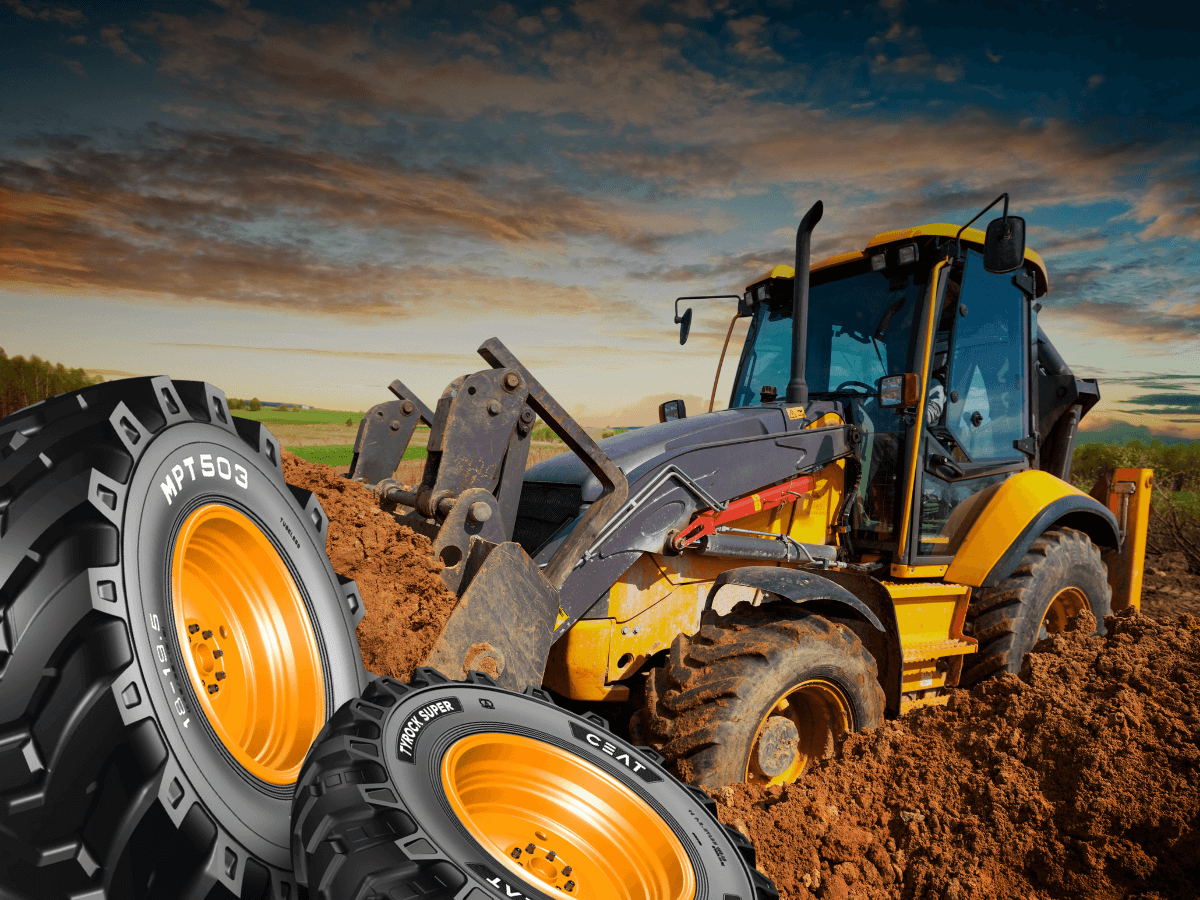ceat-speciality:blogs-tags/all,ceat-speciality:blogs-tags/construction-&-industrial
Tips for Optimal OTR Tyre Usage
Sat, 14 Dec 2024 | PRODUCTS
Off-the-road (OTR) tyres are crucial for heavy-duty equipment operating in challenging terrain. To maximise their performance and lifespan, following best practices for OTR tyre usage is essential. In this blog post, we'll discuss key tips to optimise the performance of your OTR tyres and ensure your operations run smoothly.
This guide will provide valuable tips to enhance the performance and lifespan of your OTR tyres, helping you maximise your investment.
Choose the Right Tyre for the Job
- Match Tyres to Your Specific Needs: Selecting the right OTR tyre for your application is essential. Different types of work environments require different tyre specifications. For instance, if you work in muddy or loose soil conditions, consider tyres with deeper treads for better grip. Conversely, tyres with reinforced sidewalls can provide additional protection against punctures for rocky terrains.
- Match the Application: Choose tyres that are specifically designed for your application, considering factors like load capacity, terrain, and operating conditions.
- Consider Tyre Size: Select the appropriate tyre size to ensure optimal performance and minimise wear and tear.
- Check Load Index and Speed Rating: Ensure the tyres can handle your equipment's weight and speed requirements.
- Consider Seasonal Changes: Seasonal variations can impact the performance of OTR tyres. In winter, cold temperatures can affect tyre flexibility and grip. Using appropriate winter tyres can improve traction in icy conditions. Similarly, ensure that your tyres can withstand heat and provide adequate cooling in summer. Always adapt your tyre choices based on the prevailing conditions.
Conduct Routine Tyre Inspections
- Visual Inspection: Regularly inspect your tyres for signs of wear, damage, and foreign object embedment.
- Tread Depth: Monitor tread depth to ensure adequate traction and prevent tyre failure.
- Sidewall Inspection: Check for cracks, cuts, or other damage that could compromise tyre integrity.
- Pressure Check: Maintain proper tyre pressure to optimise performance and reduce wear.
Maintain Optimal Tyre Pressure
- Consult the Manufacturer's Guidelines: Refer to the manufacturer's recommendations for the ideal tyre pressure.
- Avoid Overinflation and Underinflation: Both can lead to premature tyre wear and reduced performance.
- Regular Pressure Checks: Monitor tyre pressure regularly, especially before and after long shifts.
Proper Tyre Maintenance
- Regular Cleaning: Remove dirt, debris, and foreign objects from the tyres to prevent damage.
- Wheel Alignment: Ensure proper wheel alignment to minimise uneven tyre wear.
- Avoid Excessive Load: Avoid overloading tyres, leading to premature wear and damage.
- Implement Proper Tyre Storage Practices: Storing OTR tyres correctly can significantly impact their lifespan when not in use. Store tyres in a cool, dry place away from direct sunlight, which can cause rubber degradation. If possible, keep them elevated off the ground to prevent moisture accumulation. Also, ensure they are not exposed to harsh chemicals or oils, as these can deteriorate the rubber compounds.
- Rotate Tyres Regularly: Rotating your tyres regularly promotes even wear, extending their lifespan. Follow the manufacturer’s recommendations for rotation intervals. Typically, rotating every 6,000 to 8,000 kilometres is a good practice. This simple step can significantly improve performance and reduce the risk of blowouts.
Safe Operating Practices
- Avoid Sudden Stops and Starts: Sudden moves can accelerate tyre wear.
- Smooth Operation: Operate equipment smoothly to minimise tyre stress.
- Avoid Overloading: Overloading your machinery can put undue stress on your OTR tyres. Always adhere to the manufacturer's load limits for your vehicles. Exceeding these limits can cause excessive wear and lead to premature tyre failure. Calculate the load distribution carefully and ensure even weight distribution to maintain stability and tyre health.
- Monitor Tyre Temperature: High temperatures can accelerate tyre wear. Monitor tyre temperatures during operation.
- Use Smooth Driving Techniques: Driving techniques play a significant role in the longevity of OTR tyres. Avoid rapid acceleration and sudden braking, which can increase wear and tear. Instead, aim for smooth, gradual movements. This extends the life of your tyres, enhances fuel efficiency, and reduces the risk of accidents.
Conclusion: Maximize Your OTR Tyre Investment
These tips for optimal OTR tyre usage will help you maximise your investment. Regular inspections, maintaining proper inflation, choosing the right tyres for specific applications, and adopting smooth driving techniques are all crucial for extending tyre life. Additionally, proper storage and regular rotation can further enhance performance.
Following these guidelines ensures that your OTR tyres perform at their best, providing the reliability and safety you need for your heavy-duty operations. Investing in good maintenance practices will save you money in the long run and enhance your machinery's efficiency. Trust CEAT Specialty UK for high-quality OTR tyres that meet your needs, and watch your productivity soar!















